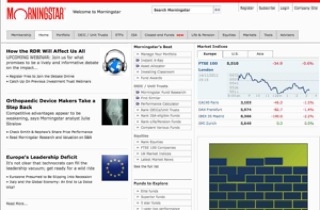
Morningstar UK, a leading provider of independent investment research, has today introduced its revised methodology for the Morningstar Rating for closed-end funds in the UK.
The change allows UK investors to more readily compare risk- adjusted performance between all Morningstar-rated funds, regardless of a rated fund’s legal structure.
Notably, the new Morningstar Rating for closed-end funds is now calculated using a fund’s Net Asset Value (NAV), which Morningstar believes enables a superior measure of a fund’s risk- adjusted performance, more fully reflecting the contributions of the closed-end fund manager. Previously, the Morningstar Rating for closed-end funds was calculated using the fund’s market closing price.
In addition, Morningstar now calculates quantitative ratings for all London-listed closed-end funds using the Morningstar Category system, which Morningstar believes provides better relevance and granularity for the analysis of a fund against its true peers, both closed- and open-end funds, including exchange-traded funds. This is particularly important for those funds with a specialist remit, where their closed-end peer group is insufficient for the calculation of a Morningstar Rating. Previously, Morningstar rated closed-end funds within their Association of Investment Company sectors.
“The changes to our closed-end fund rating methodology are intended to assist advisers in their whole-of-market proposition”, said Jackie Beard, director of closed-end fund research for Morningstar UK. “Risk-adjusted performance comparisons—on a vehicle-agnostic basis—are now possible, which means investors and advisers can now more readily compare the Morningstar Ratings of investment trusts with those of similar open-end and exchange-traded funds. We wanted to make this change ahead of the industry’s shift to a fee-based advice model, when a greater interest in investment trusts is expected to emerge.”
The Morningstar Rating for closed-end funds is calculated on the fourth business day of each month and is available on the fifth business day in all Morningstar products. The closed-end fund methodology does not adjust for transaction costs.

